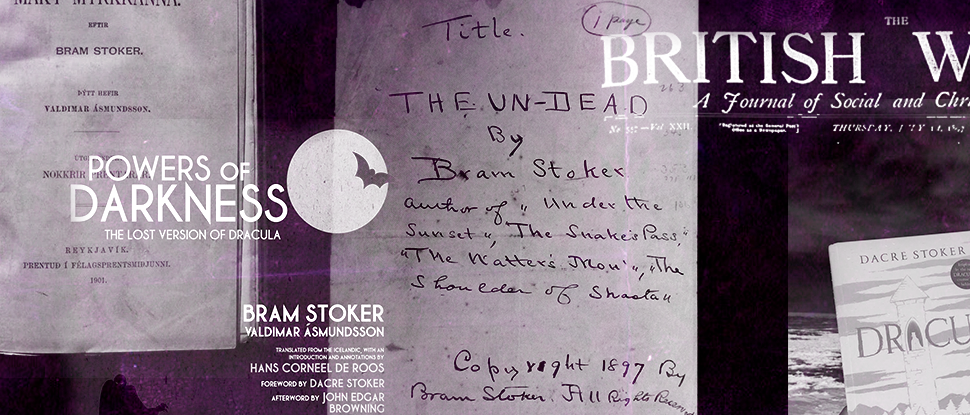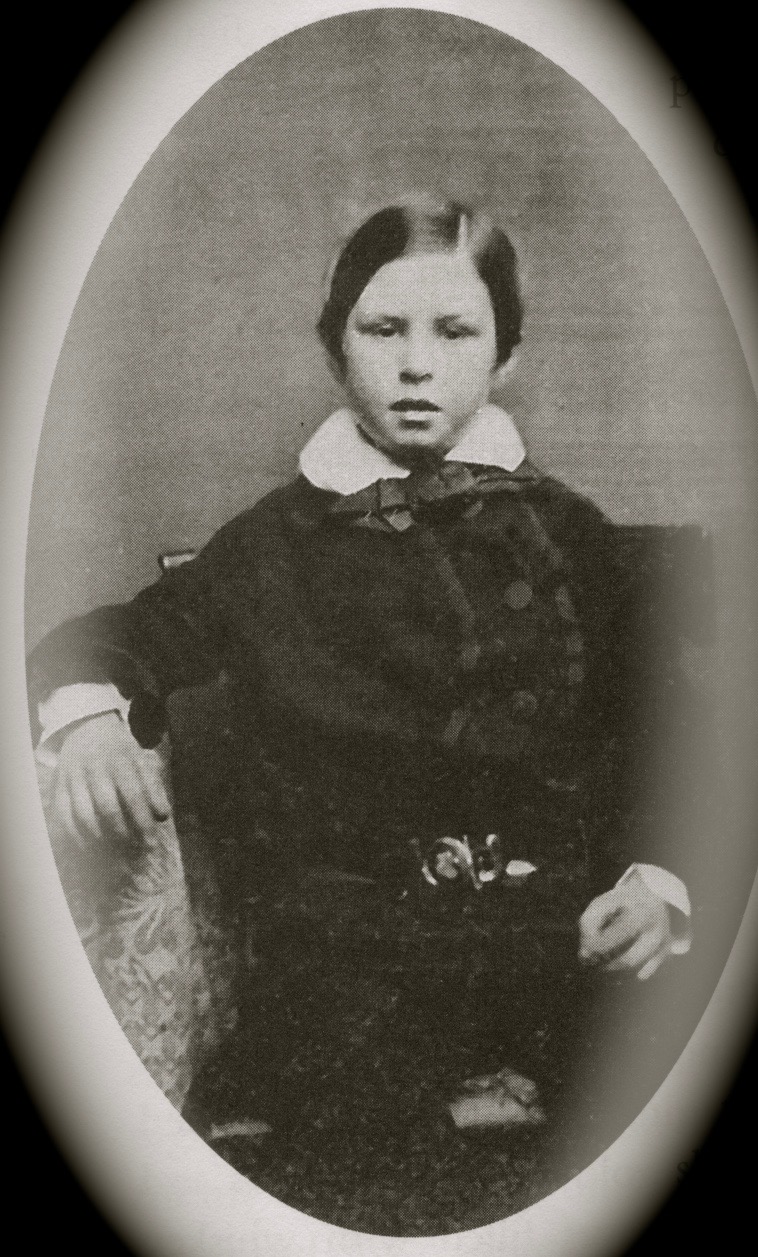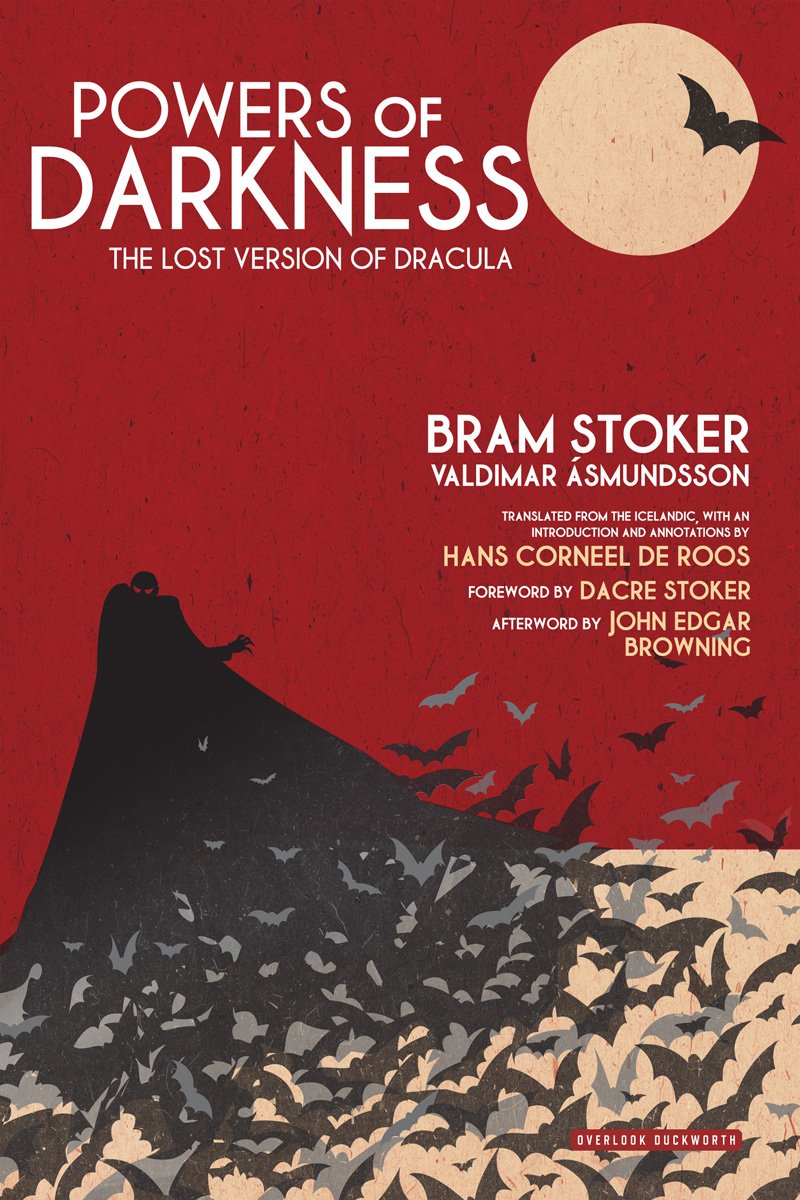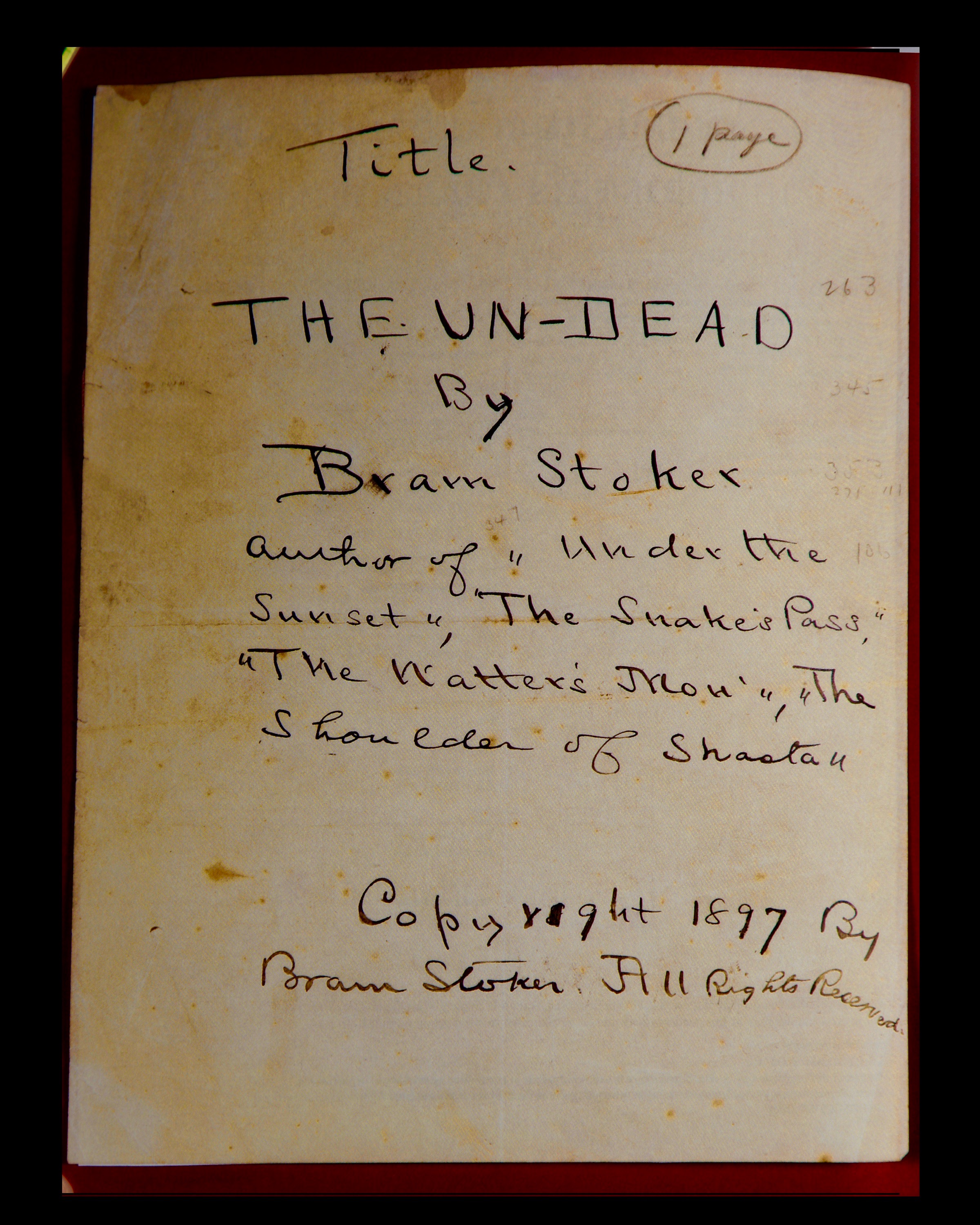- Home |
- Search Results |
- 5 fascinating and unknown facts uncovered from Bram Stoker’s vaults

1. Illnesses were commonly explained by the supernatural
In the Rosenbach museum’s collection of Bram’s notes for Dracula, there is a pasted newspaper clipping of an 1896 New York World article entitled “The New England Vampire Scare”. Bram probably read this while he was on a Lyceum Theater tour of the U.S., and its relevance to Dracula is easy to see. It discusses how the “vampire scare” involved the misinterpretation of tuberculosis outbreaks—before the advent of modern medical science, widespread deaths in strange circumstances would be explained by forces, like the presence of a vampire, that we would now consider to be superstition. The article also mentions Charles Darwin’s encounter with vampire bats in South America, which was quite possibly the inspiration for the character Quincey Morris’s own adventures there. How appropriate, also, that the Count should be able to shape-shift into a large bat!
2. Bram's Mother introduced him to horror stories

From birth to age seven, Bram was bedridden with a severe (and still unexplained) illness. During those years, he was “entertained” by some ghastly stories told by his mother, based on her own experiences. Charlotte Stoker had grown up in the north-west of Ireland during a terrible cholera epidemic. Her true stories were often more horrible than Bram’s fiction, but the similarities are undeniable. They told of mass graves and the living accidentally buried with the dead. In one tale, a man was awakened from an opium stupor by a blow intended to break his legs so he’d fit in a coffin. Another told of a neighbour of Charlotte whose wife took ill. One day, checking on her in the hospital, he was told she had died and been placed in the morgue. Wishing to pay his respects, he found her in the mass communal grave at the edge of town—still alive, struggling to crawl out.
3. There was a vastly different version of the Dracula we know and love

The Dracula we know was, like all books, the product of many rounds of edits. It has come to light that an early version of the novel, containing some starkly different material, had been serialised in a Swedish newspaper and then published as a novel in Iceland four years after the “final” version was published in London. Bram’s preface to this earlier version is striking—the author warns his readers that Dracula is a true story. See for yourself:
"I am quite convinced that there is no doubt whatever that the events here described really took place, however unbelievable and incomprehensible they might appear at first sight.
All the people who have willingly - or unwillingly - played a part in this remarkable story are known generally and well respected. Both Jonathan Harker and his wife (who is a woman of character) and Dr. Seward are my friends and have been so for many years, and I have never doubted that they were telling the truth."
4. Dracula was a product of international folklore
Bram researched the folklore of 13 countries that had some version of a creature rising from the dead to prey on the living. We only have one interview from him on the writing of Dracula, but it provides illuminating insights into his interest in reality and superstition. Jane Stoddard writes:
"He had always been interested in the vampire legend. "It is undoubtedly," he remarked, "a very fascinating theme, since it touches both on mystery and fact. In the Middle Ages the terror of the vampire depopulated whole villages."
Whether or not Bram believed vampires to exist, he undoubtedly knew how to play on the fear of that possibility.
5. There were 101 pages that have never been found

The original Dracula typescript, owned by Paul Allen, who graciously allowed J. D. Barker and me to study it, sheds light on a very interesting topic: “the missing 101 pages”—a substantial portion of excised text from Bram’s first drafts that has never (yet) been found. Several clues about its content, however, exist in Bram’s pencilled edits to this typescript. It shows that he crossed out a number of references to events from Dracula’s Guest, indicating that the well-known short story was indeed originally part of the novel. Moreover, there are quite a few notes in the margins from Bram’s older brother, Thornley Stoker, an eminent medical authority, detailing specific medical terms and procedures that appear in the novel—such as Lucy’s blood transfusions and Renfield’s brain surgery.
Dracul by Dacre Stoker and J.D. Barker is out now.